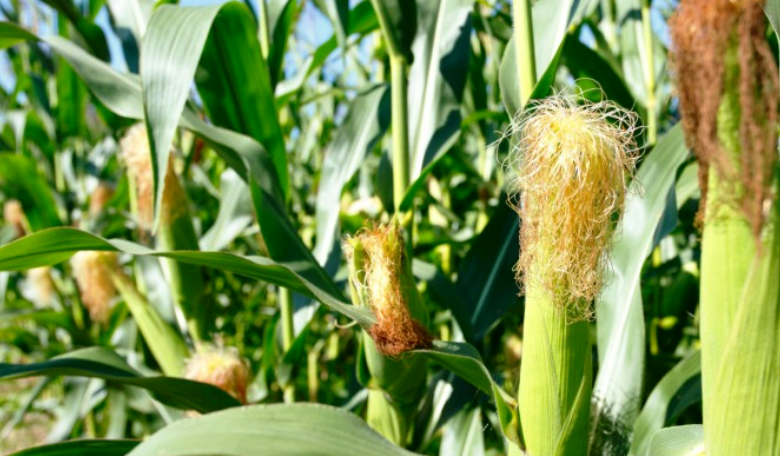Maize Cultivation in India – Maize Farming Methods

Farmers are done Maize cultivation for food and fodder purposes. The second name of the maize crop is the queen of cereals globally because it has the highest production rate among all the cereals crops. This crop provides grain, which people consume in starch, corn flakes, and glucose. We can also use it as animal feed in poultry. Also, we can grow maize in a variety of soils, and it matures in just 3 months.
Apart from this, maize cultivation is also beneficial for shielding the deteriorating grade of soil. Major maize growing states are Uttar Pradesh, Rajasthan, Bihar, Madhya Pradesh, Himachal Pradesh, J & K, and Punjab. And Major maize producers in south India are AP and Karnataka.
How to Do Mize Cultivation in India?
You have to take care of some requirements to cultivate the maize. So, let’s know about them.
1. Climate Requirement
You have to make sure you are growing the maize at 25°C to 30°C for excellent growth. While at the time of sowing, the temperature must be 25°C to 30°C. The maize farming needs rainfall from 50 to 100 cm. Lastly, you should harvest the field when the temperature lies between 30 to 35°C.
2. Soil Requirement
You should do maize cultivation in well-drained alluvial or simply red loams with reasonable fertility rates. The land must be full of nitrogen and free of coarse elements. The maize can be grown in various soils, from loamy sand to clay loam. And for the increased yield, you have to grow it in the soils, which have good organic matter and pH range from 5.5 to 7.5 with good water holding capacity. You have to skip maize cultivation in heavy clay soil.
Popular Varieties with Yield
There are several varieties of this crop in India. We have listed some of them with their yield.
- PMH 1 – 21 QTL/acre
- Prabhat – 17.5 QTL/acre
- Kesri – 16 QTL/acre
- PMH-2 – 16.5 QTL/acre
- JH 3459 – 17.5 QTL/acre
- Prakash – 15-17 QTL/acre
- Megha – 12 QTL/acre
- Punjab sathi 1 – 9QTL/acre
- Pearl Popcorn – 12 QTL/acre
- Punjab sweet corn – 50 QTL/acre
- FH-3211 – 2643 kg/acre
- JH-10655 – 2697 kg/acre
- HQPM-1 Hybrid – 2514 kg/acre
- J 1006 – released in 1992
- Pratap Makka Chari 6 – 187–200 QTL/acre
Apart from this, you can also grow some other states varieties, which are:
- PC 1 – 12 to 14 QTL/acre
- PC 2 – 14 QTL/acre
- PEEHM 5 – 20 QTL/acre
- PC 3 – 16 QTL/acre
- PC 4 – 16 QTL/acre
And lastly, you also can cultivate some varieties developed by some private companies. These varieties are Pioneer 39V92 & 30R77, Monsanto Hi, Pro Agro 4640, Shri Ram Genetic chemical Ltd.Bio 9690 & Raj Kumar, Shell & Double, Polo, Hybrid Corn & KH 121 (Sonalika), Kanchan Seed, Mahyco MPM 3838. Zuari C. 1415, GK 3057, Ganga Kaveri GK 3017, Syngenta India Ltd NK 6240.
3. Land Preparation
Land preparation is the most important task to free the land from weeds and crop residues. First, you have to plough the ground so that soil can be brought at its satisfactory tilth level. You have to plough the land 6 to 7 times for maize farming. You should use a high-quality tractor like mahindra Tractor and others for land preparation. After the land preparations, you can apply 4 to 6 tons of well-decomposed cow dung per acre. Take care the furrow and ridges space must be 45 to 50 cm.
4. Sowing
You should sow the seeds from May end to June in Kharif Season. And for the spring season, you can sow the seeds from late February to march. Moreover, the plantation of this crop is good around the year except December and January. The 3 to 4 cm sowing depth is suitable for its farming. The ridge seed drill and dibbling seeds methods are beneficial for maize cultivation.
5. Irrigation
You should apply first irrigation immediately after sowing. However, if rainfall is satisfactory, you do not have to apply irrigation. In the early phase of the crop, you have to ensure that there is no water stored in the field. After 20 to 30 days of sowing, you should rinse the area once weekly. Water stress can be harmful to the crop in Seedling, flowering, knee height and grain feeling stages.
6. Harvesting
When the cobs outer cover turns white, it is the right time for harvesting. You can also check the harvesting time by stalks. So, stalks have dried and moisture as about 17-20%, you can harvest the crop. You have to understand what you want from this crop in this farming, like sweet corn, baby corn, or popcorn.
Sweet corn harvesting- When the crop comes near harvesting or maturity, it is the right time for sweet corn harvesting.
Baby corn- You have to harvest baby corn 45 to 50 days after emergence.
Pop Corn- You have to wait for the crop’s maturity and leave the crop for as much as possible.
So, we are happy to help you with this blog. For more cultivation methods and farming information, stay tuned with us.





